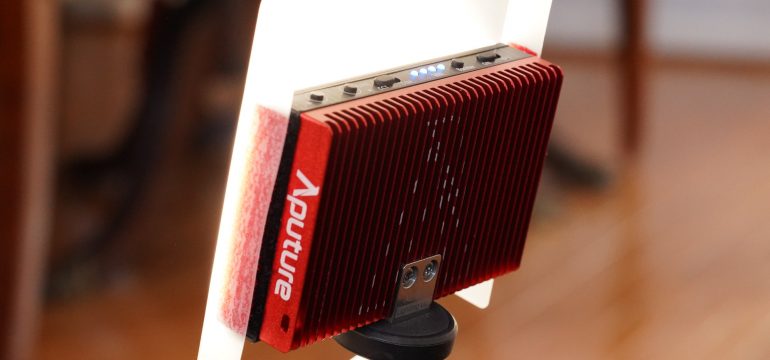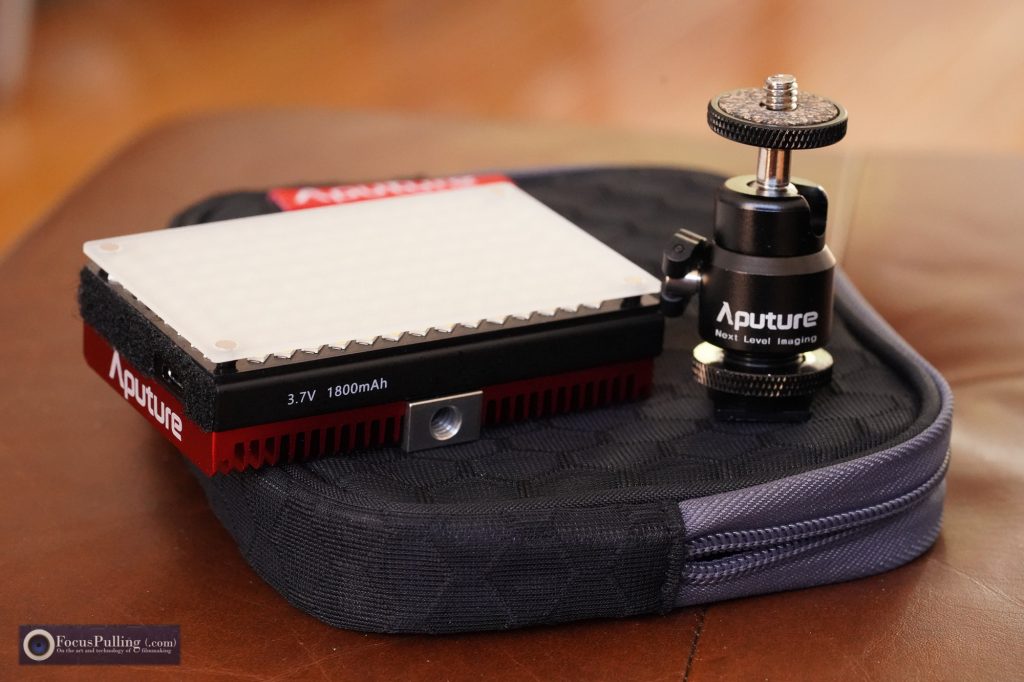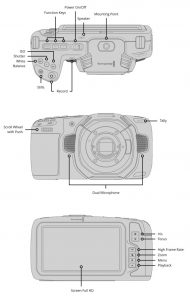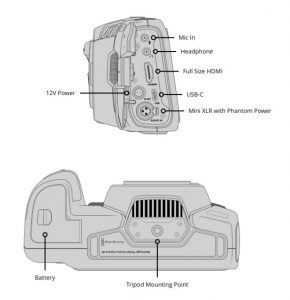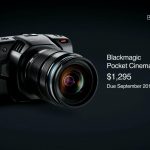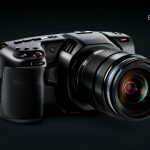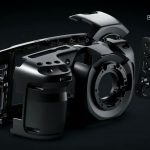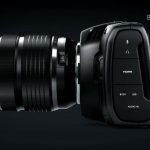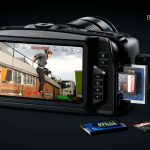This post is really about the pertaining long-form video, above, that takes a deep dive into the features of an exciting new product from Luxli called the Cello, part of their Orchestra series of full-color lighting that started with their smaller Viola. The video is a full tour through the smartphone/tablet app called Luxli Conductor for Android and iOS, showing you its numerous Bluetooth control features that include white balance control, color gels, color pickers (from a live view or from recorded media), and RGB sliders. I show the app controls as an inset on the right side of the screen, with a matching live view of the light’s actual emission (onto a 1.1x projection screen) on the left side, starting at the 8-minute mark, captured using a Sony a7 III, with no color profile, in UHD-4K resolution, set to reference indoor white balance (3200K).
 As mentioned in the video, if we were to judge things by the annual hysteria at the NAB show last month, this year it was all about color lighting, which goes by several abbreviations: RGB, RGBW, and RGBAW. That last spec, which defines the Cello, stands for red/green/blue/amber/white. It literally means that there are separate light-emitting diodes (LEDs) for each of those colors, combined under one “lens” as seen in the below close-ups, that work together casting pretty much any color you can dream up. You could achieve it less effectively with just red, green and blue LEDs in combination, but by adding white, you get better performance especially when you want to use the light just for its most common purpose, illuminating subjects in indoor and outdoor color temperatures without any hue/color bias. And by adding amber, you get even better performance than mixed RGB, when you want to throw purer incandescent-range color temperatures into the mix.
As mentioned in the video, if we were to judge things by the annual hysteria at the NAB show last month, this year it was all about color lighting, which goes by several abbreviations: RGB, RGBW, and RGBAW. That last spec, which defines the Cello, stands for red/green/blue/amber/white. It literally means that there are separate light-emitting diodes (LEDs) for each of those colors, combined under one “lens” as seen in the below close-ups, that work together casting pretty much any color you can dream up. You could achieve it less effectively with just red, green and blue LEDs in combination, but by adding white, you get better performance especially when you want to use the light just for its most common purpose, illuminating subjects in indoor and outdoor color temperatures without any hue/color bias. And by adding amber, you get even better performance than mixed RGB, when you want to throw purer incandescent-range color temperatures into the mix.
 The video best explains (at great length!) the various nuts and bolts of how it works, and the design of the product. Some highlights include the fact that it takes Sony NP-F series batteries, which you never need to buy in the form of Sony/OEM because these are, after all, just lights. So Luxli includes a generic NP-F750 battery that runs about two hours, while you can also upgrade to a Watson NP-F975 for longer than three hours. Speaking of Watson, I also like that they include their innovative wall charger with retractable AC prongs — which also can double as a charger for just about any battery on the market, using removable adapter plates for two bucks each. I explained and reviewed Watson’s charging system here at the blog a few years ago. (Lately, it’s an affordable remedy to answer Sony’s greed for not providing any charger with the new a7 III.)
The video best explains (at great length!) the various nuts and bolts of how it works, and the design of the product. Some highlights include the fact that it takes Sony NP-F series batteries, which you never need to buy in the form of Sony/OEM because these are, after all, just lights. So Luxli includes a generic NP-F750 battery that runs about two hours, while you can also upgrade to a Watson NP-F975 for longer than three hours. Speaking of Watson, I also like that they include their innovative wall charger with retractable AC prongs — which also can double as a charger for just about any battery on the market, using removable adapter plates for two bucks each. I explained and reviewed Watson’s charging system here at the blog a few years ago. (Lately, it’s an affordable remedy to answer Sony’s greed for not providing any charger with the new a7 III.)
 When it comes to external power options, unfortunately that USB port you see here isn’t actually for bus power — just for firmware updates, if they happen. The round “coaxial” barrel socket to its left is what you’d use for powering via an AC adapter, though they don’t specify what to get. Here’s the product that B&H links to at their pertaining Recommended Accessories page; at twelve bucks, they probably should’ve just thrown one in.
When it comes to external power options, unfortunately that USB port you see here isn’t actually for bus power — just for firmware updates, if they happen. The round “coaxial” barrel socket to its left is what you’d use for powering via an AC adapter, though they don’t specify what to get. Here’s the product that B&H links to at their pertaining Recommended Accessories page; at twelve bucks, they probably should’ve just thrown one in.


 I’m looking forward to their release of a promised diffusion soft box that’s custom-molded to this Cello, just like the one they made for the Viola. That’ll make this product a portable all-purpose contender, perhaps creating buyer’s regret for that well-received but overpriced Aputure Amaran MX that I reviewed a few weeks ago. Of course, the combination of a strong diffusion filter, and its spacing away from the light surface, will result in decreased total light output, but having this flexibility to add diffusion easily, is a must.
I’m looking forward to their release of a promised diffusion soft box that’s custom-molded to this Cello, just like the one they made for the Viola. That’ll make this product a portable all-purpose contender, perhaps creating buyer’s regret for that well-received but overpriced Aputure Amaran MX that I reviewed a few weeks ago. Of course, the combination of a strong diffusion filter, and its spacing away from the light surface, will result in decreased total light output, but having this flexibility to add diffusion easily, is a must.
 Speaking of price, it’s available now at B&H for $399. That feels like a tough pill to swallow for such a small light, but there’s nothing else like it on the market, considering the broad range of control via smartphone/tablet app, and programmability for special effects that can equally serve modest theatrical/musical performances as well as any movie set. In that regard, multiple units can be chained together for discrete or synchronized control via Bluetooth. I just hope that this Orchestra product line takes off (would their 1×1 panel be called “String Bass”?) so that it’s possible to build a truly integrated kit with centralized remote control. Even better: could all these LED light manufacturers get together and agree on a standard protocol for light control — sort of a Z-Wave for studio lighting? That would be awesome.
Speaking of price, it’s available now at B&H for $399. That feels like a tough pill to swallow for such a small light, but there’s nothing else like it on the market, considering the broad range of control via smartphone/tablet app, and programmability for special effects that can equally serve modest theatrical/musical performances as well as any movie set. In that regard, multiple units can be chained together for discrete or synchronized control via Bluetooth. I just hope that this Orchestra product line takes off (would their 1×1 panel be called “String Bass”?) so that it’s possible to build a truly integrated kit with centralized remote control. Even better: could all these LED light manufacturers get together and agree on a standard protocol for light control — sort of a Z-Wave for studio lighting? That would be awesome.



